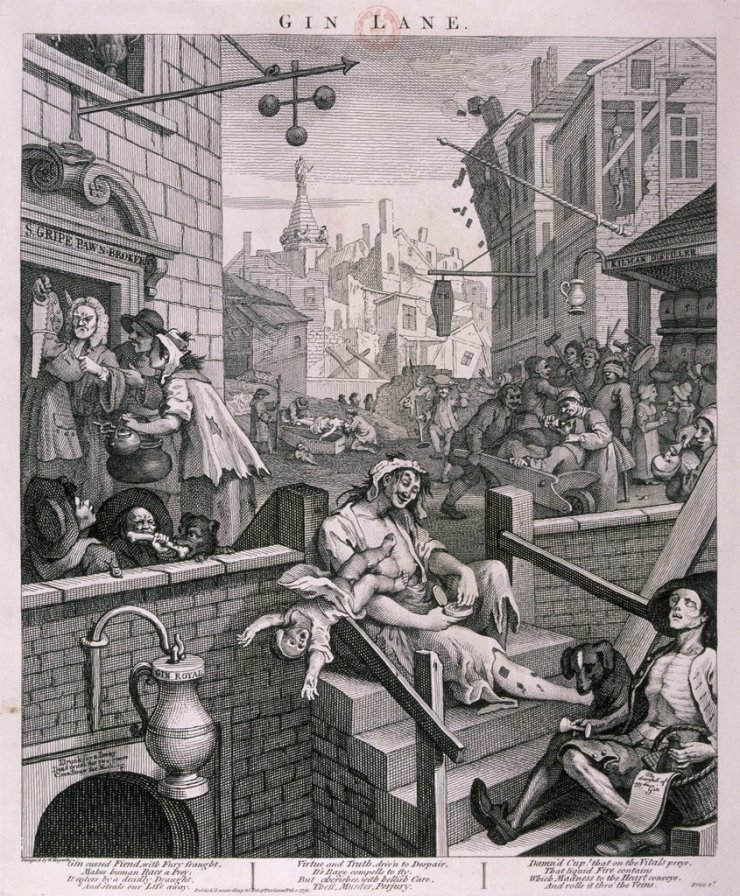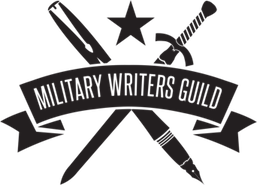You know, there’s nothing quite like a cold gin and tonic on a hot summer’s day – where you can see the condensation slowly build up on the exterior of the glass and smell the tang of lime garnish mixing with the scent of mown lawns and neighborhood barbecues. Or, if you’re like me, there’s nothing quite like a gin and tonic anytime, anywhere. Because like Her Majesty, Queen Elizabeth II, I too am a devotee of the byproduct of juniper berries.
Yet for all its association with old ladies and hipsters, gin has a far more martial past. If whiskey, as George Bernard Shaw said, is liquid sunshine, then gin is liquid gunmetal.

We first hear about gin back in the 16th century, from the Dutch, of all people. A liquor called “genever” was popular among Dutch soldiers in the 1500s, and it was from this drink that gin originated. It was a fortuitous time for gin to come on the scene since Europe decided that it had been too long since they’d had a good ol’ bloody war and so the Spaniards kicked off the Eighty Years’ War against the Dutch. In one of those odd moments in history, England and France stopped their slapfest to help out the Dutch against the Spaniards. Hell, the war went on so long that it overlapped with the Thirty Years’ War being fought in central Europe, causing no end of confusion for soldiers who weren’t sure what war they’d signed up for. All joking aside, however, the Eighty Years’ War was an incredibly brutal conflict, combining the worst of the religious and political struggles of the day.
The English troops that went to help out the Dutch in the early 1600s noted that the Dutch soldiers seemed to really enjoy their genever – especially before military engagements. This is possibly the origin of the term “Dutch courage” – meaning to use alcohol to bolster one’s spirits. Regardless, this was around the time that gin began to flow across the Channel into England. But it was a second conflict in the 17th century that really helped gin invade and overrun Britannia: the “Glorious Revolution” of 1688.

See, King James II of England was just far too chill for the more radical Protestant factions – he really wasn’t burning Catholics like he should have been and many feared that the throne was going to become permanently Papist again. So, after a couple backroom chats, Prince William of Orange from Holland was convinced to come over and claim the throne, which he did in 1688. There were a few flare ups of violence but James and his family hightailed it off to France and King William III took over the reins of England and its colonies. This upheaval naturally kicked off a new round of colonial wars which saw most of New England get massacred yet again because that’s how things went in those days.
But back to our original point about gin; with a Dutch ruler on the throne of England, gin became the drink in vogue.
I phrased that poorly: gin became the obsession of the English. The late 1600s saw gin production skyrocket since the Crown had placed a heavy duty on imported liquor. Also, gin was seen as the patriotic and religiously correct drink to consume, rather than that dastardly and papist French brandy. Queen Anne even championed the drink. But the push to make the national drink popular backfired: it became far too popular. England entered the “Gin Craze,” a time where half the drinking establishments in London were literally gin joints. Average yearly consumption of the beverage reached 2.2 gallons of gin per person – man, woman, and child. Gin and gin drunkenness soon came into the sights of the clergy who began to preach against the drink’s pernicious effects. It was thought that the consumption of gin – rather than “healthier” drinks like beer – directly contributed to criminal predilections. Bishop Thomas Wilson said in 1736 that gin produced a “drunken ungovernable set of people.”

Finally, the craze got so bad that Parliament was forced to pass five acts to slow the sale and consumption of the spirit. When the first Act was passed in 1729, there were riots in the streets – because of course there were. But by 1751, the Gin Craze had been brought under control and consumption dropped to normal rates.
Now, the 1750s saw another round of French and English wars, this time leaving France smarting under the humiliation of a loss to the English in the Seven Years’ War. From this conflict, Britain gets Canada, various bits of the Caribbean, and almost total dominance in India – which will become very important to our story of gin. It was because of this that the French were willing to pitch in on the American side during the War for American Independence, even though doing so caused them to go into so much debt that it in turn caused the French Revolution. Whoops. These wars were fought on land and sea, and the Royal Navy, it turned out, had taken over the ownership of the gin craze. Each vessel was ordered to have a certain amount of gin on board. For health purposes. No, not even kidding. New ships even came with their own gin kits.
While the enlisted men subisted on rum, Royal Navy officers drank gin. Citrus juice from limes or lemons was encouraged to keep sailors from developing scurvy and it didn’t take too long before alcohol began to be mixed with both, birthing the Gimlet. But it was the Napoleonic Wars that saw gin become a fixture of both the British Army and Navy.

Like I mentioned, France got itself into a Revolution; one which was fairly revolting. As the new French Republic began to grow up, it got into one or two wars. Or three or four. Until all of a sudden France is at war with most of Europe and there’s this small Corsican general who’s overrunning Italy. And just like that, it’s time for the Napoleonic Wars. On the seas, Vice Admiral Horatio Lord Nelson realized that he needed gin to make his officers do their duty. But there were concerns that the gin – being stored near the gunpowder – might leak and spoil the powder. So Plymouth developed Navy Strength gin – gin with a high enough alcohol content where if it leaked into the gunpowder, the gunpowder would still go off.
So yeah, that explains Trafalgar pretty well if all the officers were tanked on Navy Strength gin.
In the Army it was much the same. General Arthur Wellesley, plodding away on the Peninsula, issued his men half a pint of gin a day to keep their spirits up – and because it was healthier that most of the water in the region. This of course meant that Wellesley racked up some splendid victories while keeping hundreds of gin distilleries in business. Powered by gin on the land and the sea, Britannia weathered the storm of Bonaparte and entered into an era of relative peace in the mid-1800s.

And it was in this time that British medical doctors in India realized that doses of quinine were vital to keeping malaria at bay. However, quinine was bitter and troops avoided taking it. They avoided it, that is, until some enterprising officers realized that if you mixed the quinine with water, sugar, lime, and the daily gin ration, it became far more enjoyable. And with that, you get the iconic gin and tonic.
Gin continued to be a regular drink for the British up to the First World War, where it made its appearance in a cocktail named for one of the iconic pieces of artillery of the war, the French 75mm field gun. A mixture of gin, champagne, simple syrup, and garnish, the drink was said to have a kick that hit you like a 75mm shell. And while I’ve never been under bombardment from a 75mm, I can attest that the drink will leave you a tad shell shocked if you’re not careful.
In 1941, British forces in Hong Kong manned a defensive line against the Japanese called the Gin Drinkers Line. Lest you think it was aptly named after the Brits manning it, it took its name from nearby Gin Drinkers Bay – which probably was named for the tippling Imperials. The line did not hold, presumably because they weren’t drinking enough gin.
American experiences with gin post-WWI mainly involved making it in our bathtubs during Prohibition; hardly military, but definitely the best use of a bathtub I’ve heard in awhile.

That said, gin does make an appearance in this U.S. Army cadence – as well as the only time I’ve ever heard of a Ranger drinking gin:
“Late that night the ranger’s drinkin Gin,
Drank so much until he fell in.
Ranger hit the water, went outta sight,
Alligator on him like a flash o light!
Cause it’s gonna be a rumble!
A rumble in the jungle!
It’s gonna be fight
in the woods tonight!”
With a resurgence in gin consumption these days, one can only hope that one of the world’s militaries authorizes a daily gin ration again. Maybe that’s how we’ll finally win one of these wars, since gin was once synonymous with victory.
Enjoy what you just read? Please share on social media or email utilizing the buttons below.
About the Author: Angry Staff Officer is an Army engineer officer who is adrift in a sea of doctrine and staff operations and uses writing as a means to retain his sanity. He also collaborates on a podcast with Adin Dobkin entitled War Stories, which examines key moments in the history of warfare.
Cover image: British Quinine ration




2 Replies to “Gin: the Military Spirit”
Comments are closed.